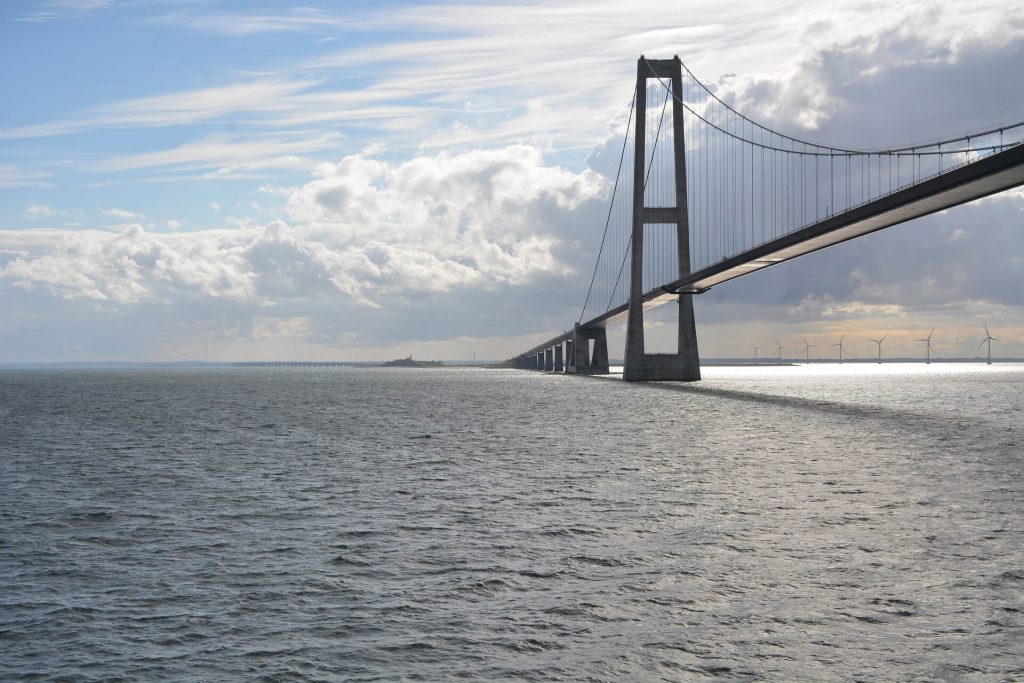The Humber Bridge in Humber England is the fourth largest single span suspension bridge around the world, making it one of the longest bridges in the world. It spans over the second largest water barrier in England, names River Humber Estuary (the estuary formed by the rivers Trent and Ouse) between Barton-upon-Humber on the south bank and Hessle on the north bank, connecting the East Riding of Yorkshire and North Lincolnshire.
This bridge is the perfect example of great engineering. As such, discussions for its construction took a long time. It was expected to be constructed in 1872; however, it was approved by the government in the 19h century. Originally, the plans were crafted in the year 1930, revised in 1955, still construction work didn’t started. It was July 26, 1972 when the construction actually got a kick-start and bridge got completed by 1981. Officially, on the 17th of July, 1981 it was inaugurated by the queen and thus bridge arms got spread to cater the needs of common people on the 24th of June, 1981.
Humber Bridge lies in the category of suspension bridges with a center span of 1420 meters (i.e. 4626ft) that ruled the charts of the longest suspension bridge in the world for over 14 years. Apart from the main span, side span adds 800 meters to the Humber connection. With a total length of 7,283 feet (2220 meters), it is suspended between two towers that rise 500 feet (152 meters) high in the sky.
The reason behind its construction lies in its importance. Government of England realized that the development of the area was not possible without the construction of this bridge. Without in, the docks in Hull were serving only to the communities of north leaving the communities across waters. Hence, its utility made government finally it fund it and get it constructed.
Moreover, it serves as a beautiful sightseeing for England getting foreign currency for the government. Being more popular than Golden Gate Bridge, pride of San Francisco, extensive car parking areas are developed on both sides.
Construction of Humber Bridge
The bridge carries a dual way for traffic entailed by lower-level footpath on both sides. The bridge is designed to bear the wind blows at the speed of 80 miles per hour; however, it bends more than 3meters at such a wind speed. The suspension spans between two towers each consisting of a pair of hollow concrete vertical columns, tapering from 6 meters square at the base to 4.5 x 4.75 meters at the top. These towers are not parallel, despite being vertical, being 36mm further apart at the top than the bottom as a result of curvature of the earth.
The north tower is grounded at the bank whereas the south tower stands in the water. However, a shifting of the tower has been realized due to shifting of sandbanks.
Few facts about Humber Bridge
- Location: east riding of Yorkshire/ North Lincolnshire
- Crosses: Humber river
- Utility: car vehicles and pedestrians.
- Category: suspension
- Maintained by: the Humber Bridge board
- Total length: 2220 meters (7283 feet)
- Center span: 1420 meters (4626 ft)
- Side span: 800 meter
- Height of towers: 152 meters (500 feet)
- Inauguration Date: 17th July, 1981
- Opened for traffic: 24th June, 1981
- Toll: car- 2.7L, HGV- 18.30L, motorcycle: 1.20L
- Annual average daily traffic: 100,000 vehicles per week



